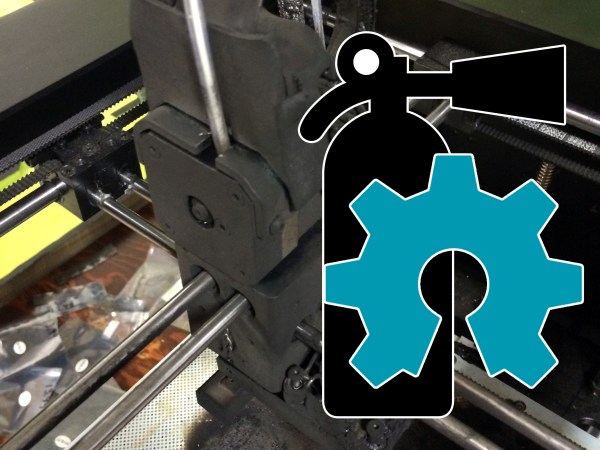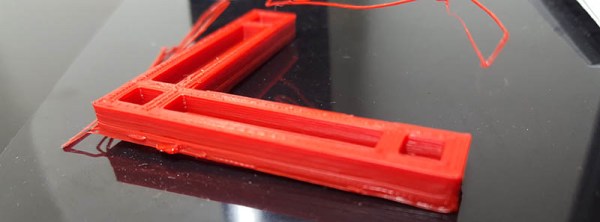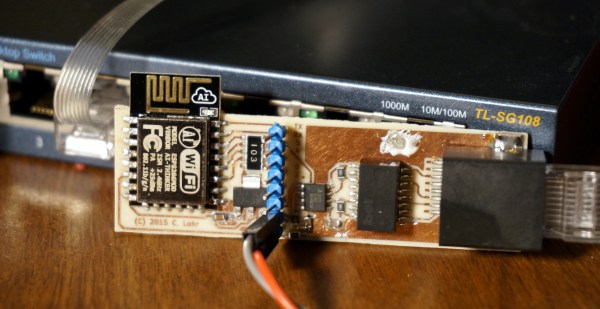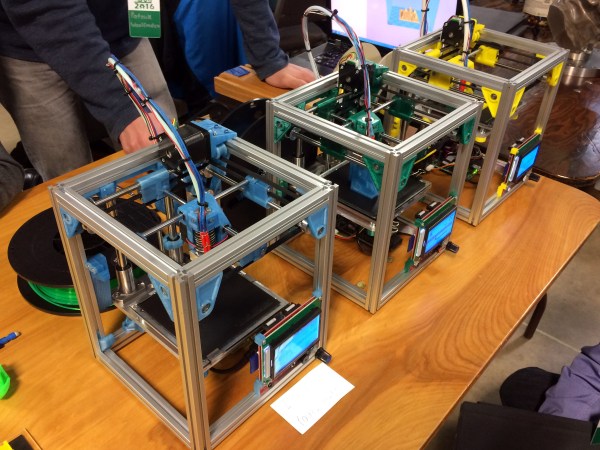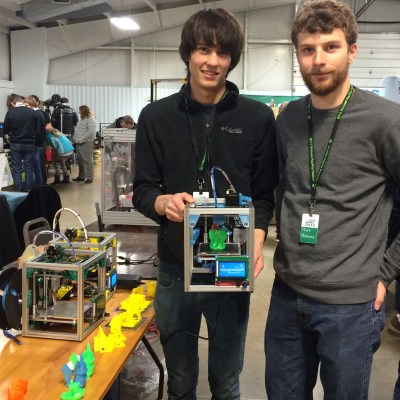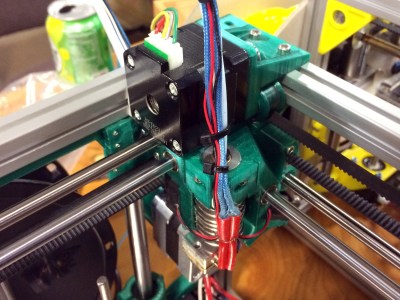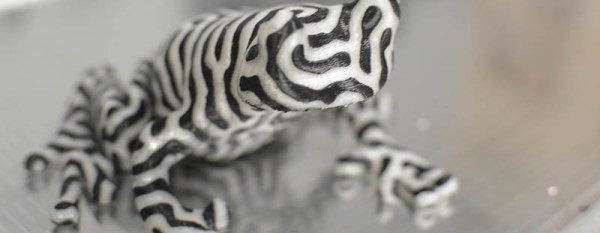We posted about a 3D printer fire a while back. An attendee of the Midwest RepRap Fest had left his printer alone only to find its immolated remains on his return. In the spirit of open source, naturally, he shared his experience with the rest of us. It occurred to me that hackers are never powerless and there are active things to be done and avenues to explore.
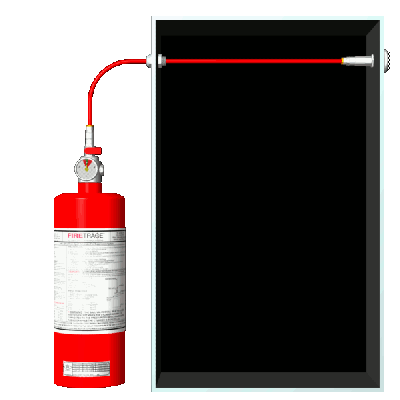
There are really fantastic commercial fire extinguishing systems out there. One implementation, which is commonly deployed in cabinets and machining centers, is a plastic tube pressurized with an extinguishing agent by a connected tank. When a fire breaks out the tube melts at the hottest locations, automatically spraying the area with a suppressant. Variations of this involve a metal nozzle filled with a wax or plastic blended to melt at a certain temperature, much like the overhead fire sprinklers.
This system is also used inside engine compartments with success. For example, this item on amazon, is nothing but a pressurized plastic tube with a gauge on one end. Since the inside of an engine compartment can be treated as an enclosed space, very little fire suppressant is needed to extinguish an unexpected flame. It is important to note that this system works in a high temperature environment like an engine compartment, which bodes well for enclosed build envelopes on 3D printers.

Another option is to construct a suppressant mine. A Japanese and a Thai company have both come out with a throwable fire extinguisher. In the Japanese device, the outside of the extinguisher is a breakable glass vial which shatters upon impact; releasing the agent. The Thai device looks like a volley ball, and releases the agent upon the application of heat. This device seems like a better candidate for 3D printing or home projects. Imagine a small rectangular pack with adhesive on one side that sits near the possible fire points of the printer, such as under the bed or above the nozzle. In the event of a fire, the casing will melt and the system will automatically deploy a spray of extinguishing agent.
Most of the chemicals used in these constructions are benign and readily available. High pressure tubing and waxes can all be purchased and the desired melt points can be aligned with their datasheets by need. Plastic sheets are not hard to procure. These offer a nice solution due to their entirely passive nature. They don’t need power to operate and rely entirely on the properties of the materials they are constructed out of.
There are other options in active systems. Hackaday readers suggested things such as flame sensors for adding automatic cut-offs in case of a fire. Thermal fuses can also be considered in some cases. There are other tricks too, which are less kosher but will work nonetheless. For example, placing a critical wire, fuse, or component in the likely path of a fire so that it is destroyed first, stopping the operation of the device quickly. These avenues should be explored. At minimum there should be at least one project that uses a Raspberry Pi and an Arduino to tweet that fire suppression failed and the house is on fire.

Some of the big questions to ask are on the legal and ethical side. If someone started selling kits for a DIY fire suppression system and a fire ends up destroying someone’s property despite the device, who is responsible? Is it even safe to post instructions? What if a kit prematurely sets off and injures someone. I imagine a big part of the cost of these professional systems is some sort of liability insurance and certification. Still, putting a six hundred dollar fire suppression system on a six hundred dollar printer seems silly, and something is better than nothing.
Lastly, the comments directed a ton of flak towards the certification systems. There should be no reason that open source projects can’t produce their own specification for safety. An open source specification without an agency naturally couldn’t provide a legal defense against property damage, but a thought-out test program would provide piece of mind. For example, in the case of 3D printers, one could have a set of basic fail-safe tests. One example would be bringing the printer up to temperature and rapidly disconnecting the thermistor, does the printer erupt into fire? No? Good, it meets the spec. I wouldn’t mind knowing that the latest version of Marlin was tested on the popular boards and still met the community specification for fire safety.
As far as I can tell, there’s been very little work in open sourcing safety systems or in providing a testing framework for ensuring open hardware meets basic safety conditions. Many of you have experience with these systems. Some of you have gone through the entirely un-enjoyable process of getting a UL certification. What does Hackaday think?

